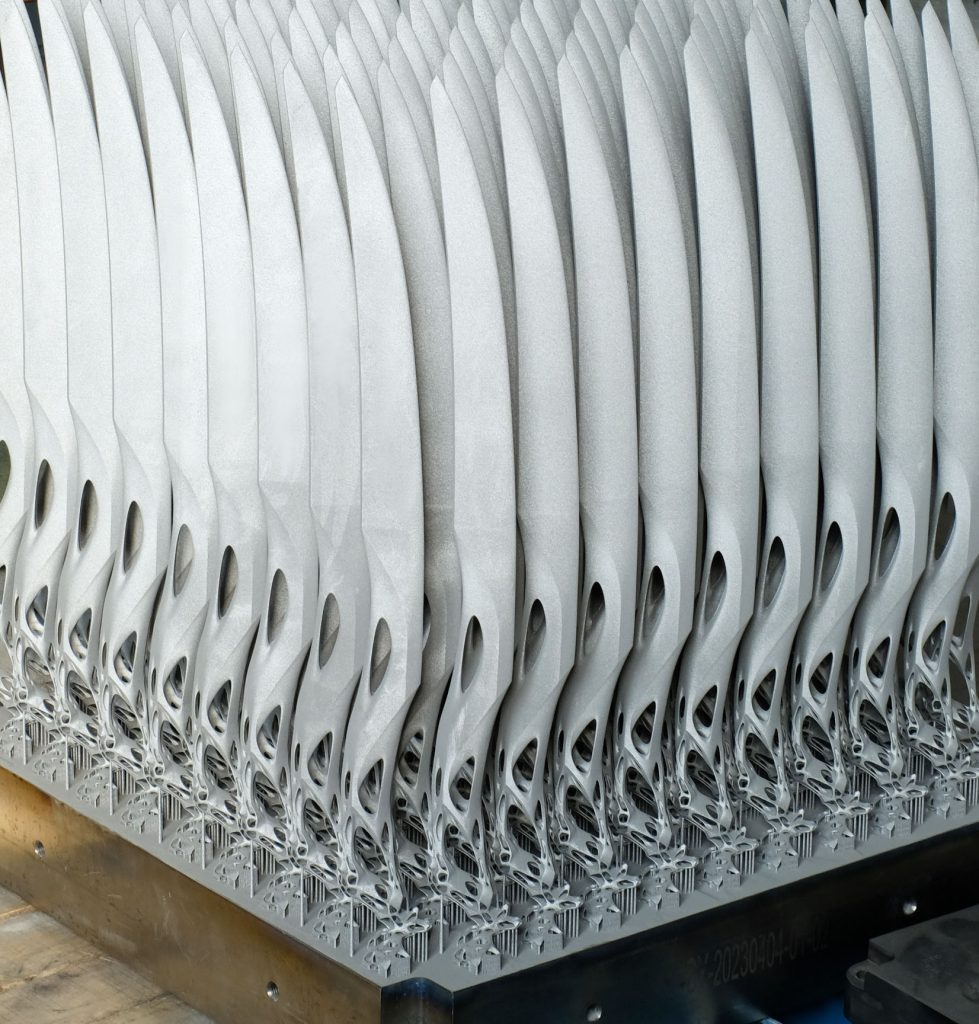Chinese 3D printer manufacturer Farsoon Technologies has partnered with Spanish electric motorcycle company Stark Future to validate the series production of titanium components through additive manufacturing. Announced as the Klinga Project, the collaboration aims to industrialize lightweight, high-strength parts for Stark’s electric motorcycles, including the flagship Stark VARG model.
The project demonstrates how titanium 3D printing can move beyond prototyping into end-use part production, supporting Stark’s push for performance, weight reduction, and sustainability in two-wheel mobility. Farsoon’s Laser Powder Bed Fusion (LPBF) technology was used to produce and qualify titanium parts that meet the strict mechanical and functional requirements of series manufacturing.
Join AM leaders and vertical experts at Additive Manufacturing Advantage. Free registration is now open for AMA: Energy and AMA: Automotive & Mobility.

Titanium parts for electric mobility
According to Stark Future, titanium 3D printed components offer significant advantages in performance motorcycles, where reduced weight directly translates into improved handling, acceleration, and energy efficiency. For high-power electric bikes like the Stark VARG, every kilogram saved extends range and improves responsiveness on demanding terrain.
Additive manufacturing also enables new design possibilities that cannot be achieved with traditional machining. Parts can be optimized with lattice structures, topology optimization, and integrated features, reducing assembly complexity while maintaining strength. Titanium’s high strength-to-weight ratio and corrosion resistance make it particularly suited for lightweight frames, mounting brackets, and structural supports in electric mobility.

Using Farsoon’s FS811M platform, the Klinga Project validated not only the mechanical performance of these titanium components but also their scalability for series production. The large-format 12-laser system allows multiple parts to be manufactured simultaneously with consistent quality, reducing the cost-per-part compared to earlier, smaller-scale titanium printing projects.
By combining advanced design methods with Farsoon’s production-scale LPBF, the Klinga Project demonstrates how additive manufacturing can move from prototyping to reliable, repeatable, end-use manufacturing in the two-wheeler sector.

Titanium Additive Manufacturing
Titanium additive manufacturing has become one of the most active areas of innovation in the AM sector, driven by its unique combination of strength, corrosion resistance, and lightweight properties. Recent research and industrial advances are helping to lower costs and expand adoption across sectors from aerospace to healthcare.
Earlier this year, researchers at RMIT University introduced a new titanium alloy that reduces 3D printing costs by nearly 30% while improving ductility, a breakthrough with significant implications for aerospace and medical parts production. In parallel, 6K Additive secured material qualification for its sustainably sourced titanium powders on TRUMPF’s TruPrint systems, highlighting how recycling and circular economy practices are being scaled into metal AM supply chains.
Collaborations are also accelerating application-driven adoption. Cycling brand Vittori recently partnered with Totum 3D and ShapeUp to produce advanced titanium components, underscoring the material’s appeal for high-performance consumer products. Meanwhile, researchers at KITECH demonstrated a 40% cut in build times for titanium printing through refined SLM parameters, further enhancing the economic viability of production-scale titanium parts.
Want to help shape the future of AM? Join the Expert Committee for our 2025 3DPI Awards, launching later this summer.
To stay up to date with the latest 3D printing news, don’t forget to subscribe to the 3D Printing Industry newsletter or follow us on Twitter, or like our page on Facebook.While you’re here, why not subscribe to our YouTube channel? Featuring discussion, debriefs, video shorts, and webinar replays.
Featured image shows the KLINGA Sabre, with a height of over 60cm. Image via Farsoon.
